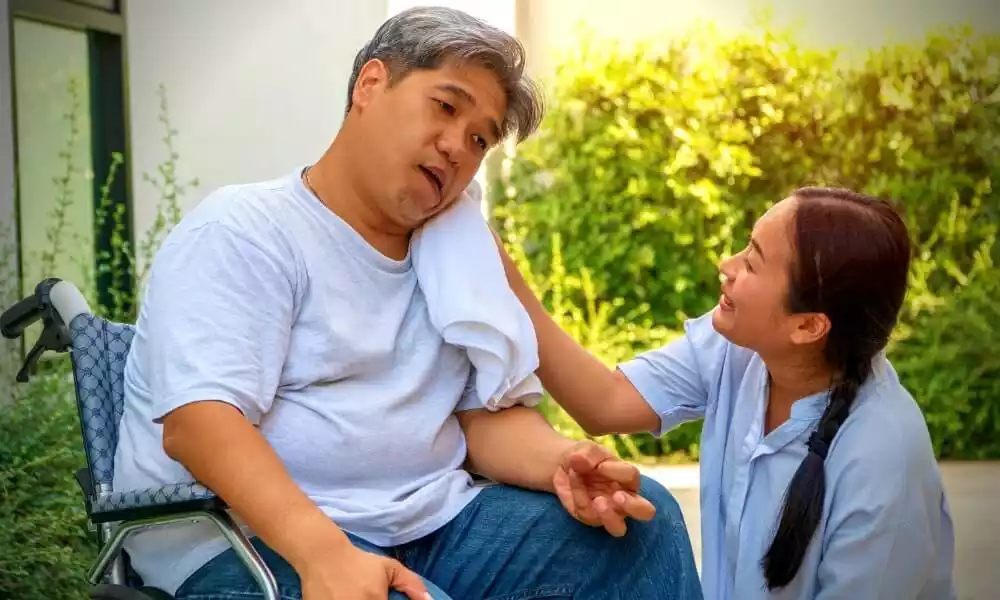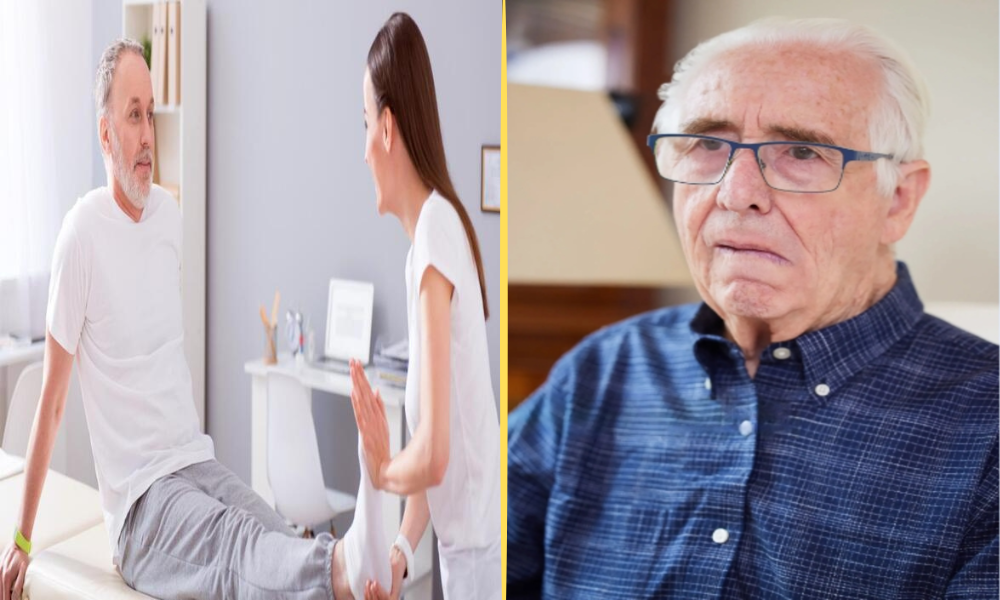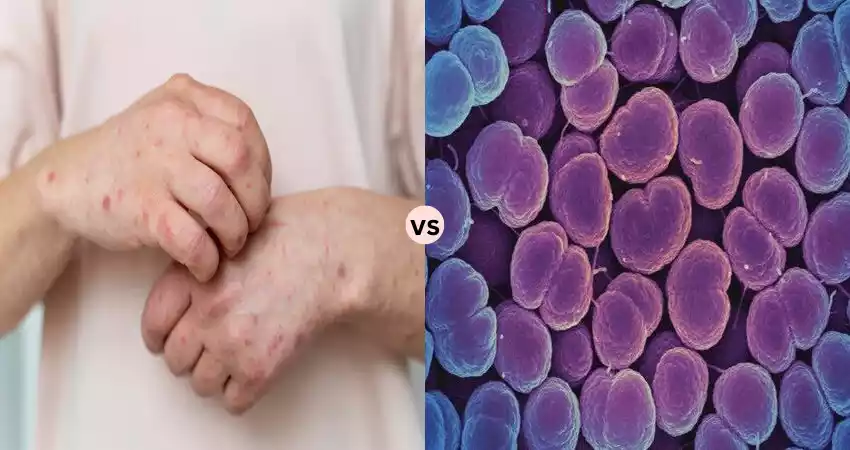Paresthesia and Paralysis are conditions related to the nervous system, with paresthesia characterized by tingling sensations and paralysis involving the loss of muscle movement. Despite their differences, both conditions underscore the intricate nature of neurological health.
Paresthesia is a strange feeling, like tingling or pins and needles, often in your arms or legs. It’s a signal that your nerves might need attention, usually caused by sitting oddly or health issues like diabetes. Fortunately, it’s usually temporary and goes away when you fix what’s causing it.
Paralysis, on the other hand, is when a part of your body can’t move at all. It’s like pressing pause on your muscles. This can happen because of serious things like a stroke, spinal cord injury, or certain diseases.
Unlike paresthesia, paralysis may need more specialized care, like therapy or medicine, to help you regain movement or adapt to changes in your body.
Definition of Paresthesia
Paresthesia is a peculiar sensation that feels like tingling, numbness, or a “pins and needles” feeling in different parts of your body. It’s akin to when your foot falls asleep.
This sensation occurs when nerves are under pressure, often due to sitting or lying in an uncomfortable position, poor blood flow, nerve damage from conditions like diabetes, or vitamin deficiencies.

The tingling is like a signal from your nerves, telling you that something isn’t quite right. Fortunately, paresthesia is usually temporary and goes away once you change positions.
On the other hand address its underlying causes, like managing a health condition or ensuring your body gets the right nutrients. It’s your body’s way of asking for attention and care.
Causes of Paresthesia
- Pressure on Nerves: Paresthesia can occur when nerves are compressed or under pressure. This often happens when you sit or lie down in a way that puts excessive pressure on a nerve, leading to a tingling sensation.
- Poor Circulation: Reduced blood flow to a specific area can also result in paresthesia. This can be caused by conditions like atherosclerosis or peripheral artery disease.
- Nerve Damage: Diseases such as diabetes or multiple sclerosis can damage nerves, causing paresthesia. Additionally, injuries like carpal tunnel syndrome can lead to this sensation.
- Vitamin Deficiencies: Insufficient levels of certain vitamins, particularly B vitamins, can contribute to paresthesia.
Definition of Paralysis
Paralysis is when a part or parts of your body lose the ability to move. Imagine pressing a pause button on your muscles. It happens when something goes wrong with the signals between your brain and muscles.

There are different types of paralysis, like when one limb is affected (monoplegia), one side of your body can’t move (hemiplegia), or even when all four limbs are paralyzed (quadriplegia). Causes can vary, including strokes, injuries to the spinal cord, or certain diseases.
Unlike paresthesia, which is a tingling or numb sensation, paralysis is a more serious condition that might need special care, like physical therapy or medical treatments, to help you regain movement or adapt to a new way of living.
Causes of Paralysis
- Stroke: A blockage or rupture of blood vessels in the brain can lead to paralysis.
- Spinal Cord Injury: Trauma or damage to the spinal cord can result in paralysis, depending on the location and severity of the injury.
- Neurological Diseases: Conditions like multiple sclerosis or amyotrophic lateral sclerosis (ALS) can cause progressive paralysis.
- Infections: Certain infections, like polio or West Nile virus, can lead to paralysis.
Key Difference Between Paresthesia and Paralysis
Here’s a brief comparison chart highlighting the similarities and differences between Paresthesia and Paralysis:
| Criteria | Paresthesia | Paralysis |
|---|---|---|
| Definition | Abnormal sensations (tingling, numbness) | Loss of voluntary muscle movement |
| Neurological Origin | Nerve irritation or damage | Nerve-related issues affecting muscle control |
| Impact on Movement | Influences movement perception | Directly impedes voluntary muscle movement |
| Underlying Causes | Nerve compression, poor circulation, nerve damage | Stroke, spinal cord injury, neurological diseases |
| Treatment | Address underlying causes, change positions | Physical therapy, medications, surgery |
| Duration | Usually temporary | Can be temporary or permanent |
| Rehabilitation | May involve adaptive strategies | Often requires comprehensive rehabilitation |
| Prevention | Maintain proper posture, and manage underlying conditions | Injury prevention, maintaining overall health |
What are the Symptoms and Signs of Paresthesia and Paralysis
Paresthesia:
Symptoms: Paresthesia often feels like tingling, numbness, or a sensation of “pins and needles.” It’s like when your foot falls asleep or when a body part feels oddly tingly. You might also experience a mild burning or crawling sensation.
Signs:
- Tingling or numbness.
- “Pins and needles” feeling.
- Mild burning or crawling sensation.
- These sensations usually occur in specific body parts.
Paralysis:
Symptoms: Paralysis is more about what you can’t do. If you’re paralyzed, you can’t move a part of your body. It’s like hitting a pause button on your muscles. The symptoms depend on the type of paralysis for example, you might not be able to move one limb, one side of your body, both legs, or all four limbs.
Signs:
- Inability to move specific body parts.
- Complete loss of muscle function in affected areas.
- Different types of paralysis, like monoplegia, hemiplegia, paraplegia, or quadriplegia, have specific patterns of affected limbs.
What are the Common Treatments for Paresthesia and Paralysis?
Paresthesia:
Treatments:
- Change Positions: If paresthesia is due to sitting or lying in an uncomfortable position, shifting to a more comfortable one can help.
- Address Underlying Causes: Managing health conditions like diabetes or ensuring proper vitamin intake can alleviate paresthesia.
- Improve Circulation: Simple activities like moving or stretching can enhance blood flow, reducing tingling sensations.
- Rest: Giving your body a break and allowing it to rest can also alleviate temporary paresthesia.
Paralysis:
Treatments:
- Physical Therapy: Specifically designed exercises can help regain muscle strength and mobility.
- Medications: Certain drugs may assist in managing symptoms or underlying causes.
- Surgical Interventions: In some cases, surgery might be necessary to address the root issue, especially after injuries or in specific medical conditions.
- Assistive Devices: Devices like wheelchairs or braces can support daily activities for those with paralysis.
- Rehabilitation: Ongoing therapy and support to adapt to changes and maximize functional abilities.
How do you practically handle Paresthesia and Paralysis?
Coping Strategies:
- Change Positions: If you experience tingling, especially after sitting or lying down, changing your position regularly can alleviate pressure on your nerves.
- Exercise Regularly: Engaging in gentle exercises, like walking or yoga, can improve circulation and reduce paresthesia symptoms.
- Manage Underlying Conditions: If paresthesia is linked to an underlying condition such as diabetes, managing that condition effectively can lessen symptoms.
- Avoid Tight Clothing: Wearing loose clothing prevents unnecessary pressure on nerves, reducing the likelihood of tingling sensations.
Treatment Options:
- Physical Therapy: A physical therapist can guide you through exercises to strengthen muscles and improve nerve function.
- Medications: Certain medications, such as those targeting nerve pain or addressing underlying conditions, may be prescribed.
How can you Prevent Paresthesia and Paralysis?
Preventing Paresthesia:
- Maintain Proper Posture: Avoid prolonged periods of sitting or lying in positions that may put pressure on nerves.
- Regular Exercise: Engage in regular physical activity to promote good circulation and overall nerve health.
- Manage Underlying Conditions: If you have conditions like diabetes or vitamin deficiencies, work with healthcare professionals to manage them effectively.
- Avoid Tight Clothing: Wearing loose-fitting clothing reduces the risk of compression on nerves.
- Limit Alcohol and Tobacco: Excessive alcohol consumption and smoking can contribute to nerve damage. Limiting or avoiding these substances is beneficial.
Preventing Paralysis:
- Safety Measures: Take precautions to prevent accidents and injuries, such as using seat belts, wearing helmets, and practicing workplace safety.
- Regular Exercise: Maintain a healthy and active lifestyle to support overall physical well-being.
- Balanced Diet: Ensure a diet rich in nutrients to support nerve and muscle health.
- Regular Check-ups: Attend routine medical check-ups to monitor and manage any underlying health conditions that may contribute to paralysis.
- Avoid High-Risk Activities: Be cautious when engaging in activities with a higher risk of injury, such as extreme sports or activities with a high likelihood of falls.
How do you Relieve yourself from this?
For Paresthesia:
- Change Positions: If you’re experiencing tingling or numbness, adjust your position to alleviate pressure on your nerves.
- Movement and Stretching: Gentle exercises and stretching can improve circulation and reduce paresthesia symptoms.
- Address Underlying Causes: If related to health conditions like diabetes, managing these conditions can help alleviate symptoms.
- Rest: Ensure you get sufficient rest, as fatigue can exacerbate paresthesia.
- Warm Baths: A warm bath may provide relief and promote relaxation.
For Paralysis:
- Physical Therapy: Engage in prescribed exercises to maintain or improve muscle function.
- Assistive Devices: Use devices like canes or wheelchairs to enhance mobility and independence.
- Adapt Living Spaces: Modify your living environment for better accessibility and safety.
- Occupational Therapy: Learn practical skills to adapt daily activities to your abilities.
- Emotional Support: Seek support from friends, family, or support groups to cope with the emotional impact.
- Medications: Take prescribed medications as directed to manage pain or address underlying issues.
What similarities exist between Paresthesia and Paralysis?
- Neurological Origin: Both paresthesia and paralysis originate from issues within the nervous system. Paresthesia often results from nerve irritation or damage, while paralysis involves the loss of muscle function due to nerve-related problems.
- Impact on Movement: Both conditions can affect a person’s ability to move or control certain body parts. Paresthesia may cause sensations like tingling or numbness, influencing movement perception, while paralysis directly impedes voluntary muscle movement.
- Underlying Causes: In some cases, both paresthesia and paralysis can share common underlying causes. Conditions such as spinal cord injuries, certain neurological diseases, or infections may contribute to the development of both symptoms.
- Treatment Involves Rehabilitation: Rehabilitation, including physical therapy and adaptive strategies, is often a part of the treatment approach for both conditions. Whether aiming to restore movement after paralysis or alleviate symptoms and improve function in paresthesia, rehabilitation plays a crucial role.
- Potential for Temporary or Permanent States: Both paresthesia and paralysis may manifest as temporary or permanent conditions. The duration and severity depend on the underlying causes and how effectively they are addressed through treatment.
Summary
Paresthesia is a temporary and peculiar sensation, often described as tingling or “pins and needles,” usually caused by factors like sitting awkwardly or underlying health issues. It serves as a signal from the nerves that something needs attention, and it typically goes away when the underlying cause is addressed.
On the other hand, paralysis involves the loss of movement in a part of the body, resulting from serious conditions such as strokes, spinal cord injuries, or certain diseases.
It is a more severe condition compared to paresthesia and may require specialized care, including therapy or medication, to help individuals regain movement or adapt to changes in their body.































